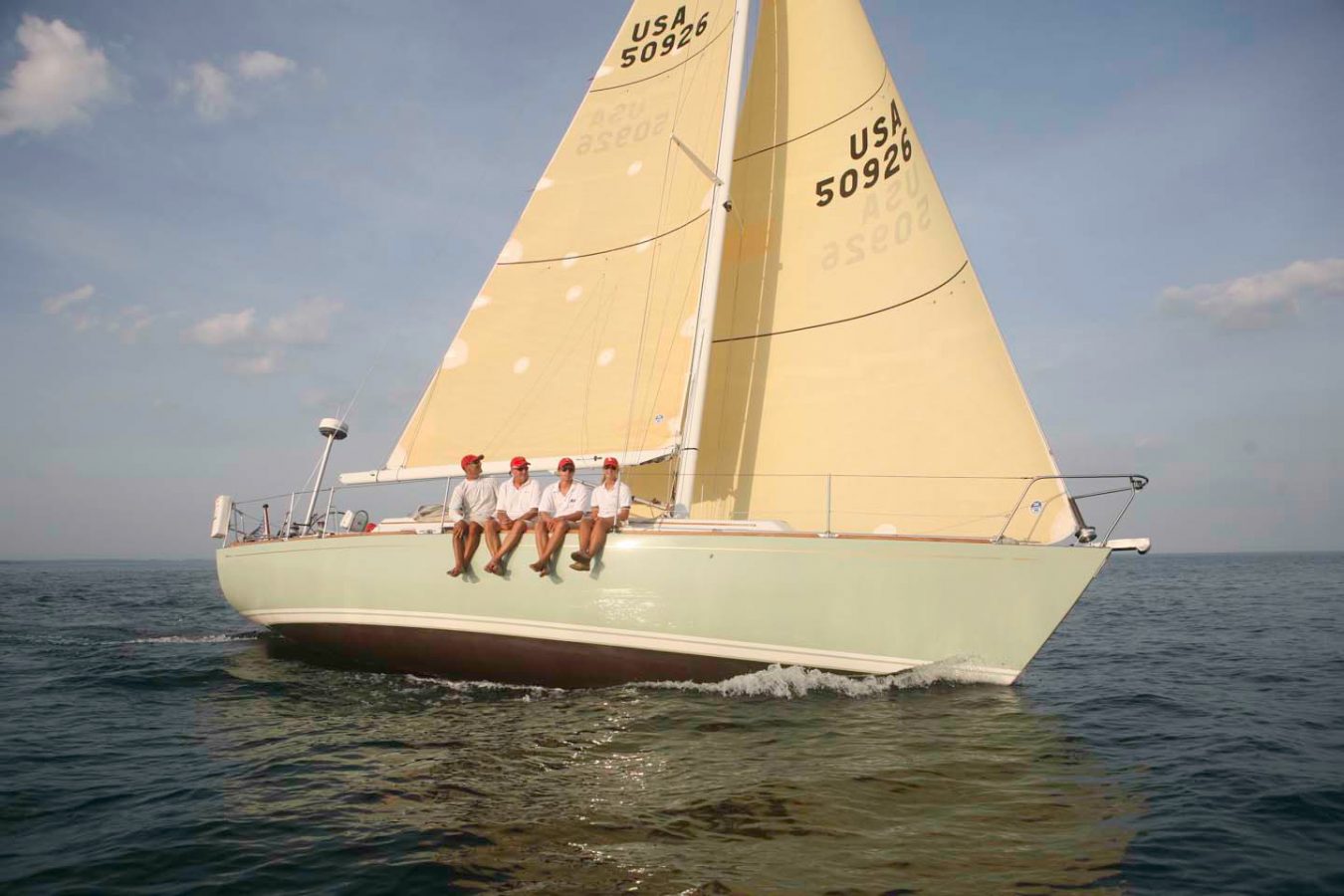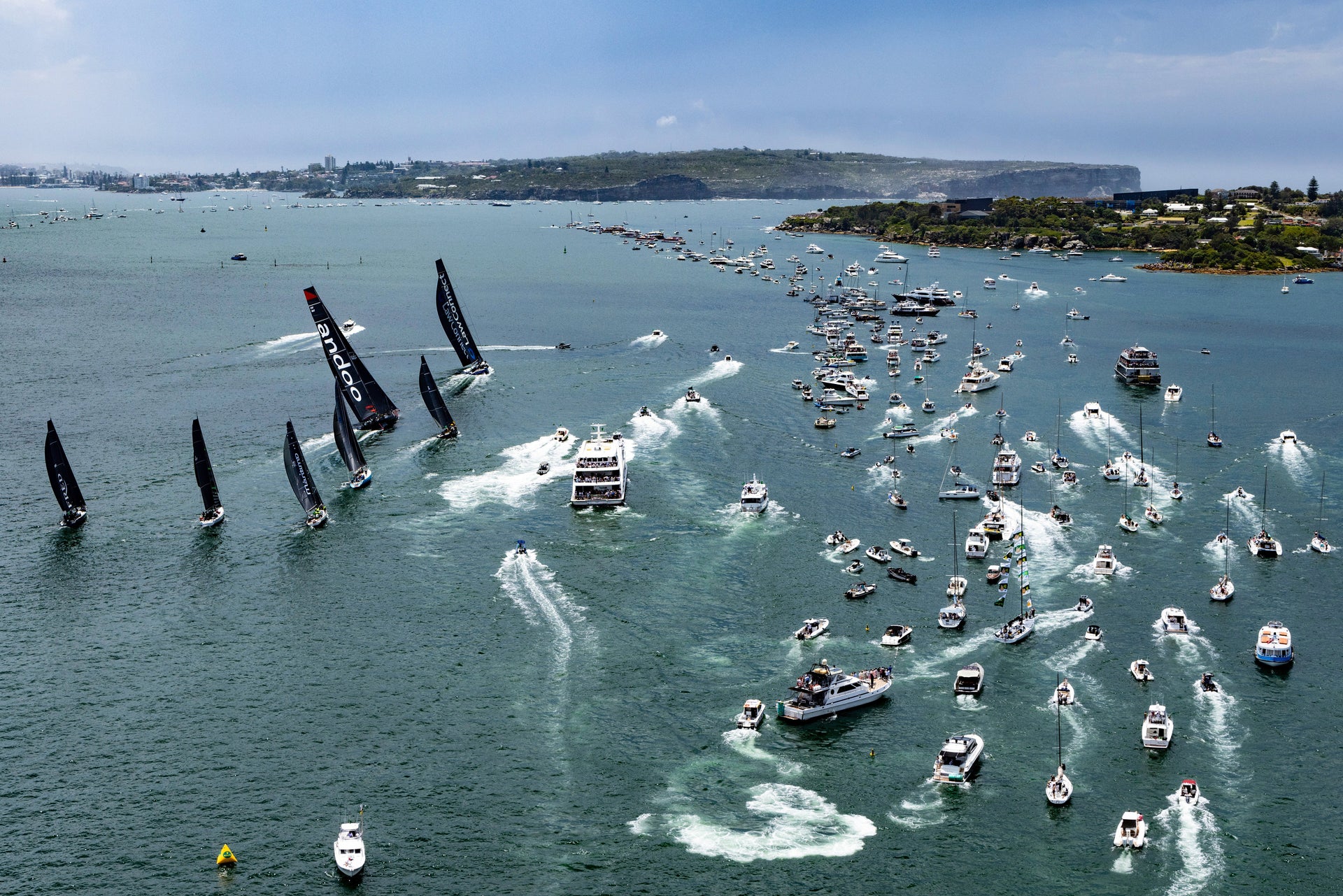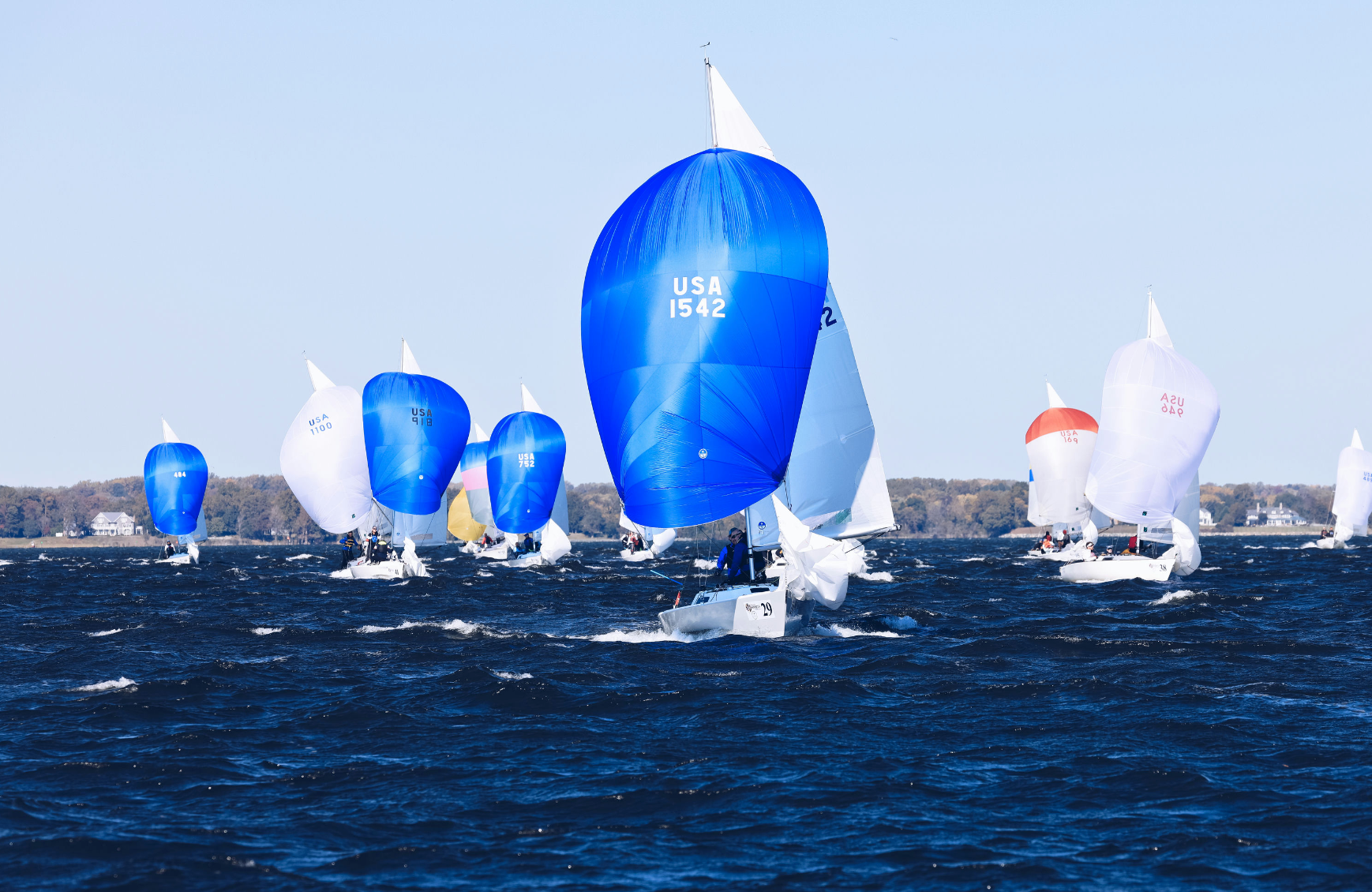FAMILY CRUISING WITH JB BRAUN
FAMILY CRUISING WITH JB BRAUN
The North Sails Director of Design and Engineering Shares How Sailing Brought His Family Together on an Adventure to Halifax

After the 35th America’s Cup ended in June 2017, I didn’t spend a lot of time dwelling on the ‘what-ifs’ or the ‘could’ve beens’. I was already focused on the next adventure, which would start just twelve days later—racing from my hometown of Marblehead to Halifax, Nova Scotia, and then cruising home again with my family.
Idea and Prep
I first mentioned what’s known around Marblehead as “the Halifax Race” or just “Halifax” on a visit home from Bermuda during the summer of 2016. The race runs every two years, and it’s usually two days of reaching or running against an impressive fleet. My sons were both interested. Tucker, who was sixteen at the time, asked “Dad, can my friend come?” I responded, “Yeah, who’s your friend?” and it turned out to be Garrett McKinnon. I was friends with Garrett’s dad, so we quickly formed a double father-son team: three McKinnons and three Brauns, joined by Todd Barbera, who brought along some valuable offshore experience.
For that final year of the Cup, planning for Halifax was like having a little carrot out in front of me, “Hey, after this, you’re going to do this other race.” Win or lose, even when our catamaran’s Achilles heel of light air was forecast for the second and deciding weekend, there was some excitement ahead, beyond The Cup.

Our family boat is called Eos, a 38-foot performance cruiser designed by Jim Taylor that we’ve owned for three and a half years. Over the winter of 2016-17, because I was based in Bermuda, it was a matter of grabbing little pieces of time to check off certain things we needed (or wanted) to do to get the boat ready. For sails, we upgraded our racing inventory with a 3Di genoa and added a prototype 3Di main and polyester Code Zero that would handle both racing and cruising. We also re-cut an old jib into a storm trysail and storm jib. I had the decks painted with non-skid. Over Christmas, we took all the winches apart on the boat. My older son Ryan took on several tasks, including a last-minute scramble to organize a life raft. Alan McKinnon took care of the food preparation. When I got back from Bermuda, I was able to fit in a few days of rest before loading the boat and pushing off the dock.

Race to Halifax
It’s 365 miles from the start outside Marblehead Neck to the finish in Halifax Harbour. As the log says, “We had a great start and a good beat and led at the weather mark. Then we had a mile reach to the second mark, where we set the spinnaker and never brought it down.” Watches were established by family, with Todd as a floater. Along with a twenty-foot shark and some whale spouts, we spotted sixteen mylar balloons.
We had a shot at winning our class, until we made a classic mistake and got too close to Brazil Rock, on the southeast “corner” of Nova Scotia. We were becalmed for an hour, accompanied by a pod of dolphins who communicated with me and said to go offshore. The dolphins were right because a quarter-mile farther out boats were sailing by us at eight knots! We finally made it out to the breeze, and once we had enough wind again, we experimented with sailing wing and wing; the log reports that “we think it went well,” and putting us back to third overall on corrected time… but then we were becalmed again right at the finish, and it took four hours to sail the last ten miles. We ended up third in our class and eighth in our division.
Of course, I would’ve liked to have done better, but the best part was racing with my boys; the camaraderie of doing an adventure together was fantastic. And we’d arrived in a totally different part of the world! My wife and daughter met us in Halifax and brought along the cruising genoa, dodger, outboard, and other gear. With so many hands, we quickly transitioned from racing to cruising, and after we said goodbye to most of the race crew we headed west again.

Gunkholing
The four of us (my wife Kelley, daughter Hayley, and Tucker, who’d stayed on for the sail home) took seven days to sail back to Marblehead. Having Tucker onboard was great because he knows the boat, and we both enjoyed sharing this next phase of the adventure with Kelley and Hayley. The wind was mostly light, so the most memorable experiences were in between the sailing: all the little towns and harbors we discovered.
After clearing with Halifax control, we set off westward planning to go into Peggy’s Cove. I was too chicken to navigate through the narrow entrance, and the wind was good, so we just took a peek before setting main and jib for an excellent power reach to Lunenberg. After dinner, we went ashore for ice cream and walked into the bookstore, which had stacks of books everywhere. Behind one pile was a man who told us if we were looking for something, he knew exactly where it would be! Tucker found a book about an adventurer in the 70s who departed from Tucker’s Wharf in Marblehead in an inflatable boat to sail across the Atlantic.

The next day after blueberry pancakes onboard and a grocery run ashore, we motor-sailed to La Have Island and dropped the hook. All four of us took a dinghy tour around Bell Island, and then the kids went farther afield on their own. Tucker’s write up in the log reports, “The dinghy ride began with the journey under the bridge connecting Bush and Jenkins Islands. The water was calm and crystal clear. We passed a few houses with lobster traps and boats in their yards. We headed south through the Wolf Gut, which was a narrow channel (6 ft) with lobster shacks and boats decorating the land on either side. In Bell Channel we beached the dinghy on two small islands. The sand was warm and dark, and when wet, could sink your feet into it about six inches. The muddy bottom was filled with crab holes and minnows. The water was pretty warm.”
The next day’s weather alternated between foggy and sunny, with no wind. We motored to Little Port Joli Basin on the outskirts of the Kejimkujik National Park. The best memory of all was approaching the land, when we escaped an offshore fog bank and anchored off a beach that looked just like the Caribbean. Aqua water, white sand, and all by ourselves in this special spot; that was completely unexpected. Tucker and I went swimming in our “Nova Scotia bathing suits” (wetsuits) while Hayley and Kelley did jellyfish watch from the dinghy.
That afternoon we went back out into the fog and motored to Little Port l’Hebert, about ten miles farther west. “Motor was foggy and not windy. About one mile away, the fog lifted, the sun came out and we could see our oasis. It was a circular bay with a couple small beaches and four houses around the bay. We anchored in 16 feet of water. It was beautiful. We had a seal friend throughout the evening that would check on us.” The next morning, we spotted a horseshoe crab and lobster on the sandy bottom. Our last port in Nova Scotia was Shelburne, where we spent two nights and visited several museums before leaving for an overnight run home.

Overnight passage
The passage from Shelburne to Marblehead is just over three hundred miles, which took twenty-nine hours of sailing and motoring. At night we were down to a couple of hundred feet of visibility in the fog, but close reaching in 10 or 12 knots of breeze with AIS and radar running, we had no real drama. Kelley and I took one watch, and Tucker and Hayley took the other; I was proud of Tucker for taking control. It can get kind of scary out there, especially at night with other boats around.
That morning offshore started with a spectacular quarter moonrise, so red we first mistook it for a port running light. The fog burned off after sunrise, but the wind never materialized, and the last eighty miles, I worried about our fuel consumption. We motored into Marblehead after dark, tired but happy to be home.

Making Memories
It’s been almost a year since the America’s Cup ended, and our family adventure began, and it might be hard to find two more different sailing experiences. They both had camaraderie; there’s simply no better place than wet, tired, and hungry on a boat for relationship-building. But I’ll never forget sharing such a great experience with my family, especially since it’s improved our communication. I’m still pretty driven and pretty critical, but we’re able to laugh and enjoy things more, which makes all those America’s Cup memories sweeter too.




























